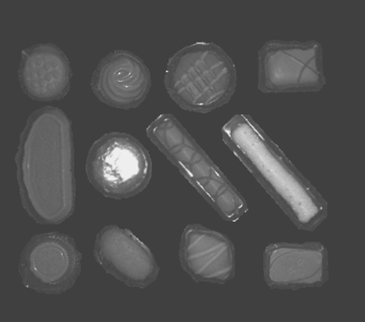The automation specialist’s new 3D Venom camera images chocolates and takes precision shape measurements to confirm that each chocolate placed in a compartmentalise tray is in the right compartment and position.
This system removes the need to deploy manual labour to perform quality checks of chocolate trays – a process that could require two people to move quickly to reseat chocolates as they pass down the line.
3D design
Paul Wilson, managing director at Scorpion Vision, said that the short baseline of the 3D Venom camera made it ideal for this application.

The shorter the baseline, the more accurate the stereo or ‘z’ depth – a camera trait that is essential for reliable decision making in this application,” he explained.
“The system requires several data sets to determine, with high accuracy, whether the right chocolate is in the right position. As well as generating a 3D profile, it relies on precise dimensional measurements, 2D imaging and colour imaging to build a complete and detailed picture.
“With this data combination, it can even analyse the texture of each chocolate to determine whether they are correctly placed. If a chocolate is upside down, for example, the vision system recognises that the texture or pattern on that chocolate is different to the reference.”
Removing bottlenecks
In using an automated inspection system, diverted packaged can be worked off the line, thus eliminating bottlenecks and back-ups while “guaranteeing perfect tray presentation”.
While developed with chocolate trays in mind, Scorpion theorised that the system could be easily applied to any production line where compartmentalised presentation trays are used, such as cup cakes, patisserie items, pastries and biscuits. Artificial Intelligence could also be integrated for enhanced performance and reliability.
“We create a profile of the product in 3D and analyse it for certain reference features,” Wilson added. “We then use AI to enhance extraction of these features - essentially training the vision system to identify and locate anomalies.
“The application of AI makes texture and pattern verification easier to do and even more reliable than with the use of 3D vision alone.”





